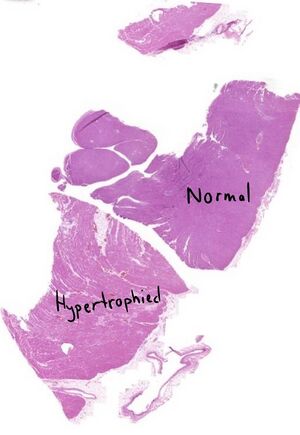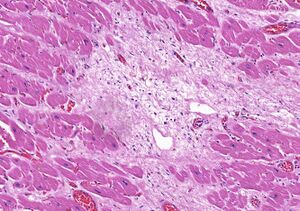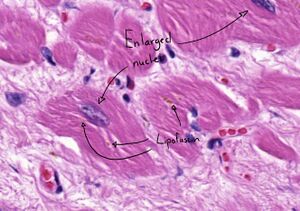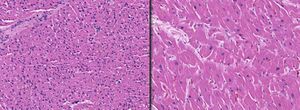15. Normal and hypertrophic cardiac muscle: Difference between revisions
(Created page with "'''Staining''': HE '''Organ''': Heart '''Description''': We see two pieces of heart tissue. The piece in the upper right corner is from a healthy heart, while the piece in the lower left corner is from a diseased heart. Comparing the two pieces, we can see that the diseased heart tissue has: * Lipofuscin in the cells * Enlarged nuclei * Interstitial fibrosis (pale morphology that differs from the rest of the myocardium) '''Diagnosis''': Hypertrophic cardiac muscle...") |
(No difference)
|
Revision as of 09:11, 9 May 2022
Staining: HE
Organ: Heart
Description:
We see two pieces of heart tissue. The piece in the upper right corner is from a healthy heart, while the piece in the lower left corner is from a diseased heart.
Comparing the two pieces, we can see that the diseased heart tissue has:
- Lipofuscin in the cells
- Enlarged nuclei
- Interstitial fibrosis (pale morphology that differs from the rest of the myocardium)
Diagnosis: Hypertrophic cardiac muscle
Theory:
The only differences that can be seen in hypertrophic myocardium compared to normal is the presence of fibrosis and the enlarged nuclei of the cells. It’s important to note that not only infarction can lead to fibrosis. Fibrosis can be present in hypertrophy as well.
Lipofuscin can also be found in other tissues and diseases than hypertrophic myocardium (as you should know by now). It is therefore not characteristic for hypertrophy, but can be seen more commonly in hypertrophy.




